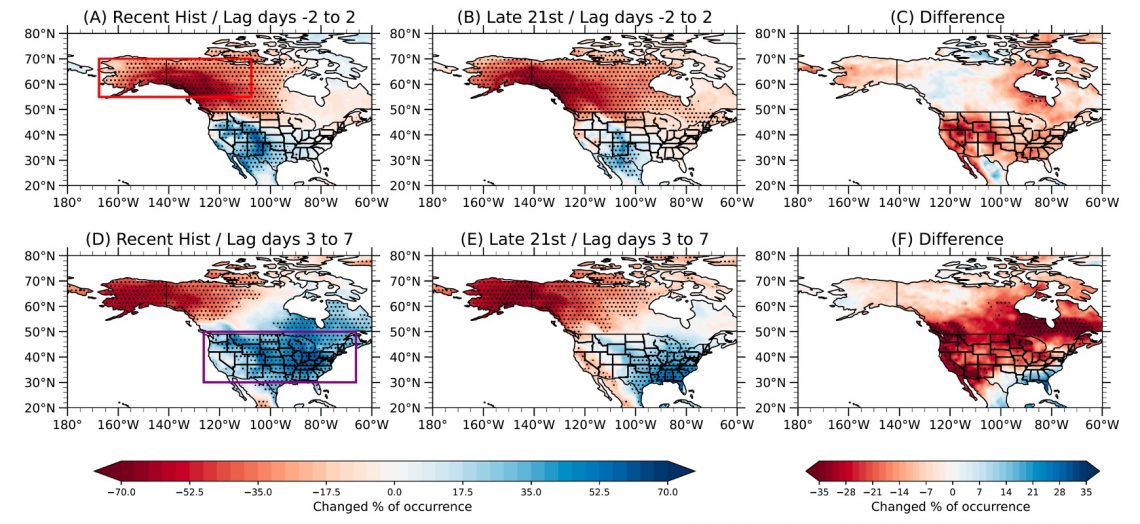September 5th, 2024
Key Findings
- This research shows that the wave interference between transient waves and climatological stationary waves over the North Pacific Ocean is an important driver of North American wintertime cold and heavy precipitation extremes in the present climate.
- The observed features of the North Pacific wave interference including its evolution and physical drivers are well reproduced by SPEAR model simulations.
- This relationship is projected to weaken under increasing greenhouse gas emissions.
- In a warming climate, the eastward shift of tropical convective activities due to changes in tropical sea surface temperature causes the projected changes in the North Pacific stationary waves and therefore structural changes in the wave interference.
Mingyu Park, Nathaniel C. Johnson, and Thomas L. Delworth. Nature Communications. DOI: 10.1038/s41467-024-51601-5
The occurrence of extreme weather events, such as heatwaves, droughts, and floods, has increased substantially since the pre-industrial period, but this trend has large regional variations. An important driver of the regional climate variability is the zonally asymmetric atmospheric circulation, or stationary waves, forced by the zonal asymmetries in the Earth’s surface such as the land-sea thermal contrast and elevated terrain (e.g., hills and mountains).
The authors show that North Pacific wave interference is a useful diagnostic for estimating the magnitude of stationary waves therein, which is tightly linked to North American weather extremes through regulating heat and moisture advection. This research also shows that the spatial structure of these regional impacts is expected to change under a high greenhouse gas emissions scenario.
Because stationary waves regulate the poleward transport of heat and moisture and influence storm track strength and location, the projected stationary wave changes in response to increasing greenhouse gas concentrations are key to understanding how regional climate may change in the future. Transient waves, or daily atmospheric circulation anomalies, in midlatitudes can contribute to regional climate variability on intraseasonal time scales through their interference with climatological stationary waves.
When daily circulation anomalies are in-phase with the climatological mean state, the anomalous transport of heat and moisture causes the enhanced occurrence of cold extremes across the continental U.S. and a significant decrease of heavy precipitation extremes in the western U.S. Using both observational data and coupled global climate model simulation data from GFDL’s SPEAR, the authors show that in a future emissions scenario, the climatological stationary wave over the eastern North Pacific weakens and shifts spatially. This alters and generally weakens the relationship between wave interference and North American climate extremes. These results underscore that the prediction of changes in regional wave interference is pivotal for understanding the future regional climate variability.



